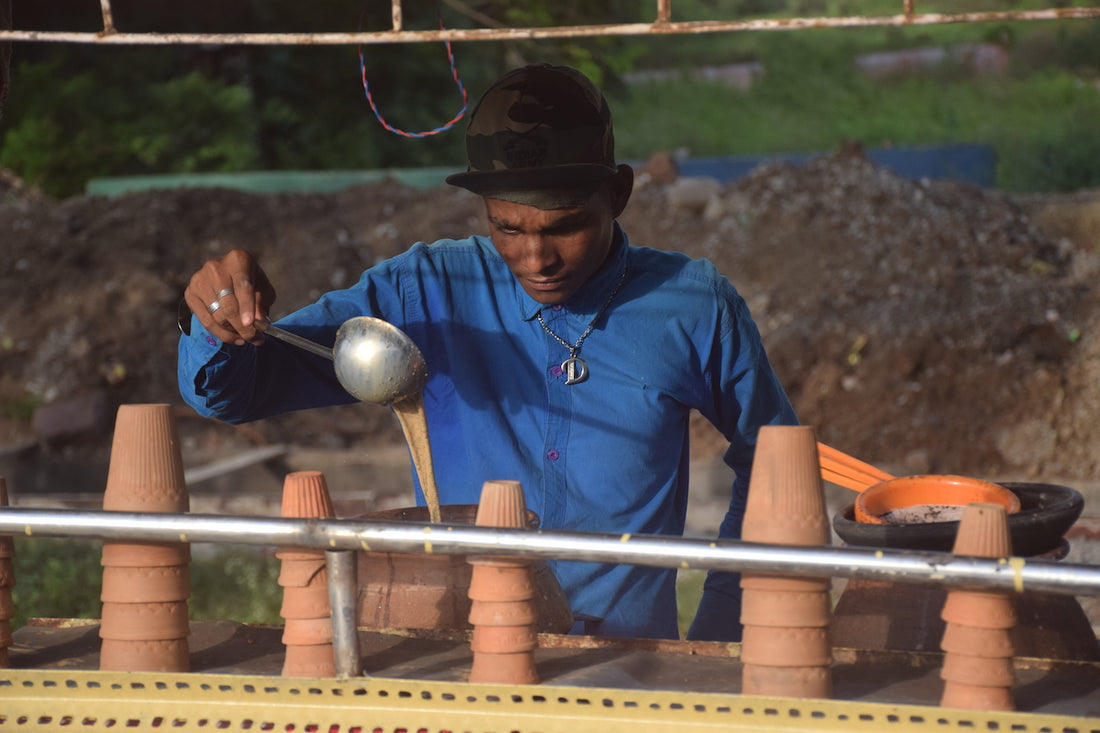India certainly isn’t the only country that claims tea drinking as their national pastime, and it no doubt tussles with a long line of contenders for having the oldest tea drinking tradition in the world. But drinking tea in India isn’t a matter of the past, it is very much a part of the here and now, a deeply embedded feature of daily life from the high mountain passes of Kashmir to the yellow beaches of Kerala. From shoeless migrant workers waiting at a dusty bus station to portly industrialists wallowing on a decadent roof terrace, everyone across the country knocks back a few glasses of chai irrespective of age, class or community. If you want to get your head around this perplexing country, the best place to start is with a hot glass of garam chai.
How do you brew?
The chai in India is very different from the chai tea or chai latte that you find elsewhere. The word chai really just translates to the word ‘tea’, and so refers to anything brewed using tea leaves. The spiced flavours that are more commonly associated with the word outside of India make up a specially spiced - or masala - chai, which has come to be the national standard of sorts.
This gold standard of masala chai is normally made using a combination of black tea, milk, spices and an unnecessary amount of sugar or sweetener. Strong overtones of cardamom and cinnamon often dominate any recipe you find yourself drinking, although the nuanced balance of spices comes down to the individual chai-wala, the tea stall owner who keeps his spice mix a closely guarded secret.
Fancy a glass-a?
The global cup craze seems to have by-passed India somewhat, which instead jumped on the unlikely candidate of a glass as the ideal receptacle for a piping-hot beverage. Somewhere between a cafeteria water glass and a glorified shot glass, chai glasses are immediately recognizable in their iconic shape and size as well as the synonymous milk bottle-style holders that chai walas use while circulating with hot glasses on offer.
But before glass, chai was sold in unheated clay pots, known as kulhads, which have recently made a comeback for the environmentally-beneficial qualities they possess. By leaving the pots unbaked, kulhads are essentially raw clay molded into the shape of a cup - perfect for a single glug of tea, but if you leave it on the ground (or more likely on the train tracks in front of you at the train station) these cups neatly unshape themselves and return peacefully to their original form with the next bout of rain.
When in Mumbai…
While chai is often consumed standing at a chai stall under a shady tree on the side of the road, the chai tradition has also embedded itself into the board rooms and meeting rooms of the archetypal Indian office. Each office tends to have its go-to chai wala, who saves you the effort and comes to you instead, turning up mid afternoon with a barrel of chai ready to dispense to the whole office, right at their desks. Next time you are sat across the table during a heated negotiation, keep in mind that it is customary to have a chai when doing business with someone in India, and refusing a chai in a meeting is likely to set your deal back a considerable way.
If you want to flaunt your chai skills and do it the local way, wait for a rainy afternoon and drink your chai with some piping hot pakora or samosa, with generous lashings of tamarind chutney on the side.


24 comments
qmQtgIrGezPJ
yBDKeAskUfmwGzXJ
WXYBKcfpF
ClMSrsIxUA
qUDZoTwSVByIOtu